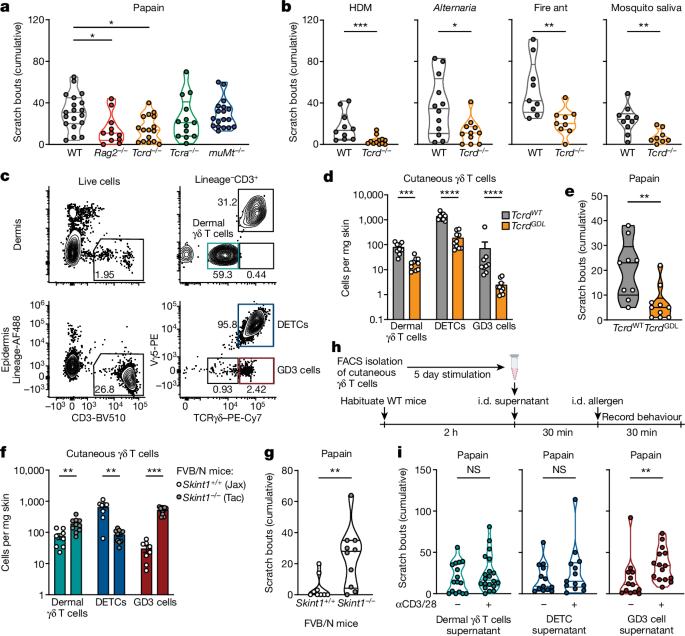Uncovering the Immune-Neuronal Axis Controlling Allergic Responses: A γδ T Cell–IL-3 Signaling Pathway Regulates Sensory Neuron Activation by Allergens
The article explores the bidirectional neuroimmune circuits that drive allergic responses, focusing on how immune cells regulate the sensitivity of sensory neurons to allergens in the naive state. The key findings are:
-
A specific subset of epidermal γδ T cells, termed GD3 cells, produces the cytokine IL-3 and promotes allergic itch and the initiation of the allergic immune response.
-
IL-3 acts on sensory neurons expressing the IL-3 receptor (Il3ra) in a JAK2-dependent manner, lowering their threshold for activation by allergens without directly eliciting itch.
-
The γδ T cell-IL-3 signaling axis further acts through the STAT5 pathway to promote neuropeptide production and the initiation of allergic immunity.
-
This immune-neuronal regulatory pathway may explain individual differences in allergic susceptibility and offers new therapeutic avenues for treating allergic diseases.
تخصيص الملخص
إعادة الكتابة بالذكاء الاصطناعي
إنشاء الاستشهادات
ترجمة المصدر
إلى لغة أخرى
إنشاء خريطة ذهنية
من محتوى المصدر
زيارة المصدر
www.nature.com
A γδ T cell–IL-3 axis controls allergic responses through sensory neurons - Nature
الرؤى الأساسية المستخلصة من
by Cameron H. F... في www.nature.com 09-04-2024
https://www.nature.com/articles/s41586-024-07869-0
استفسارات أعمق
